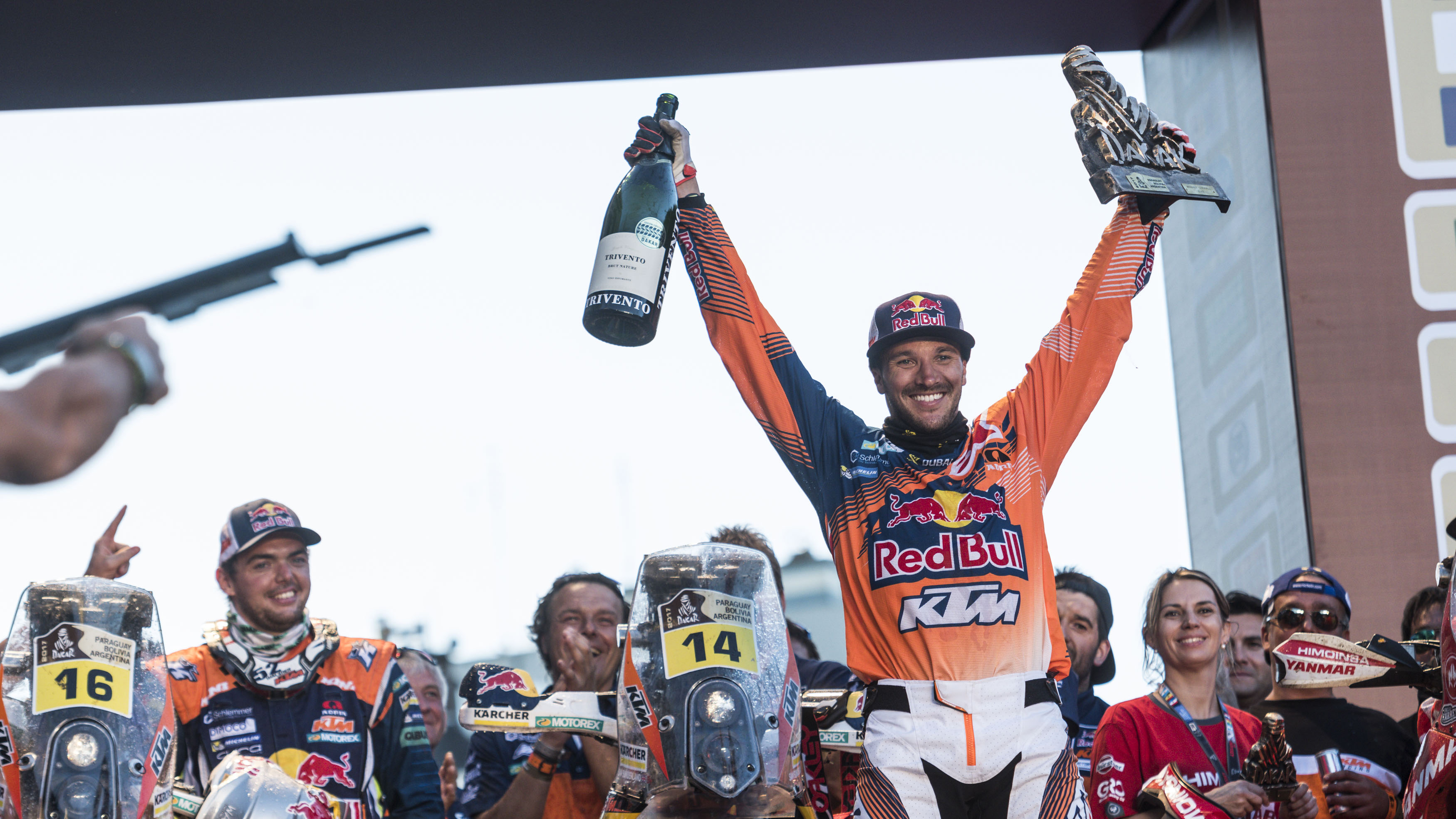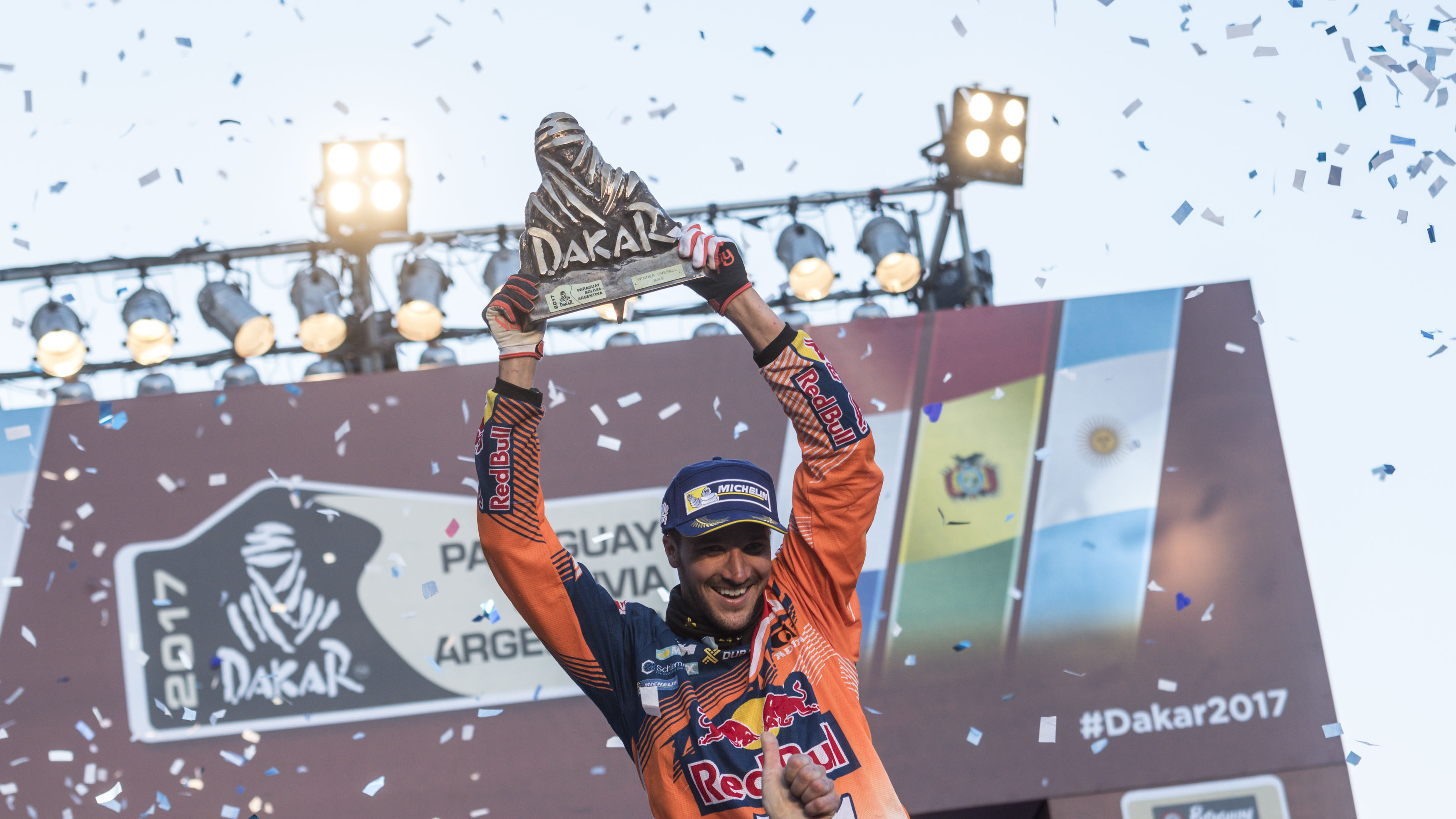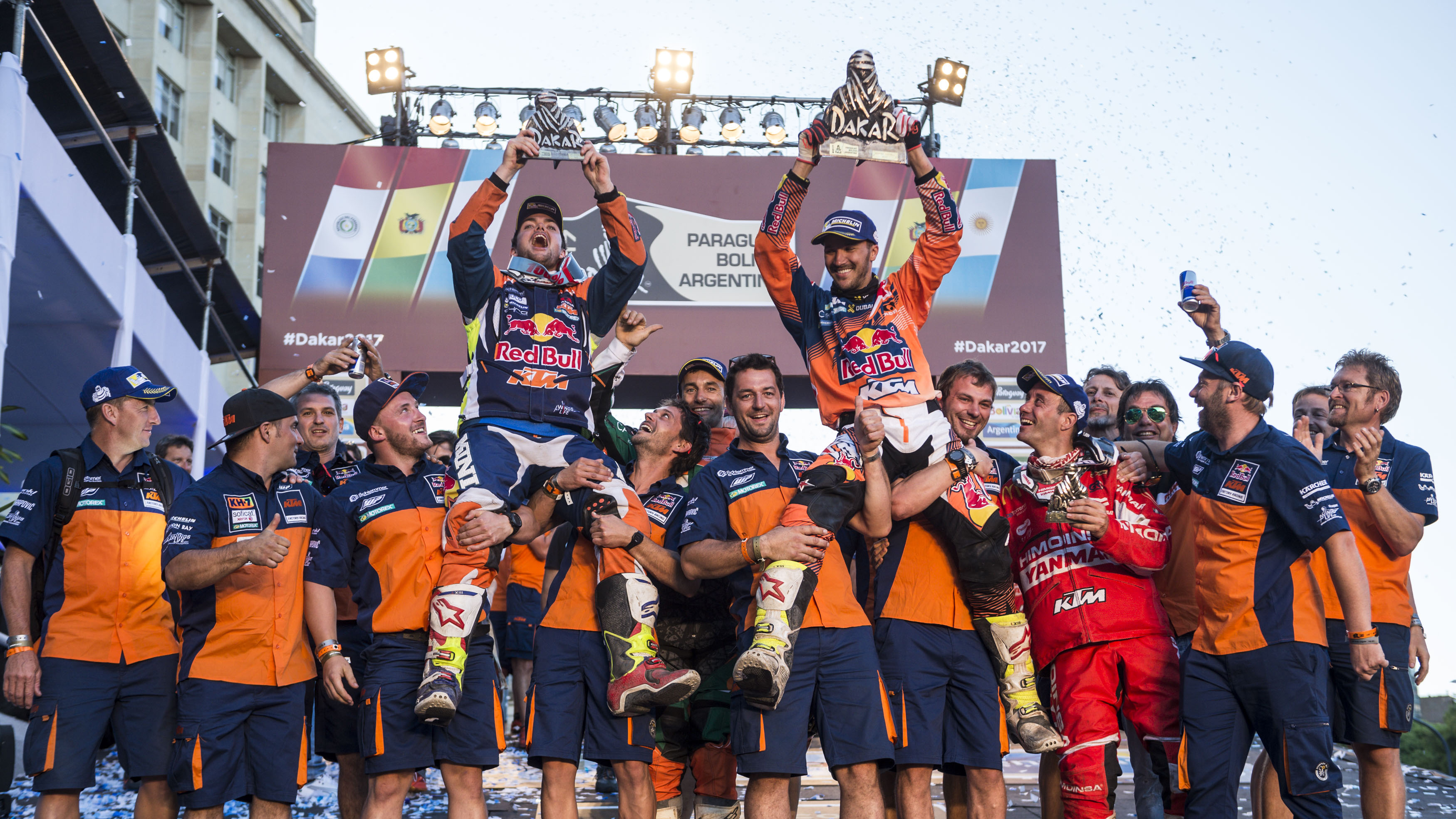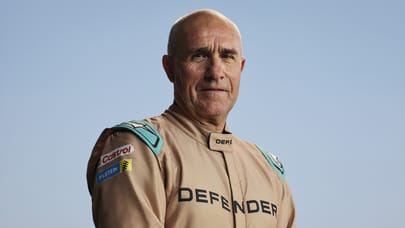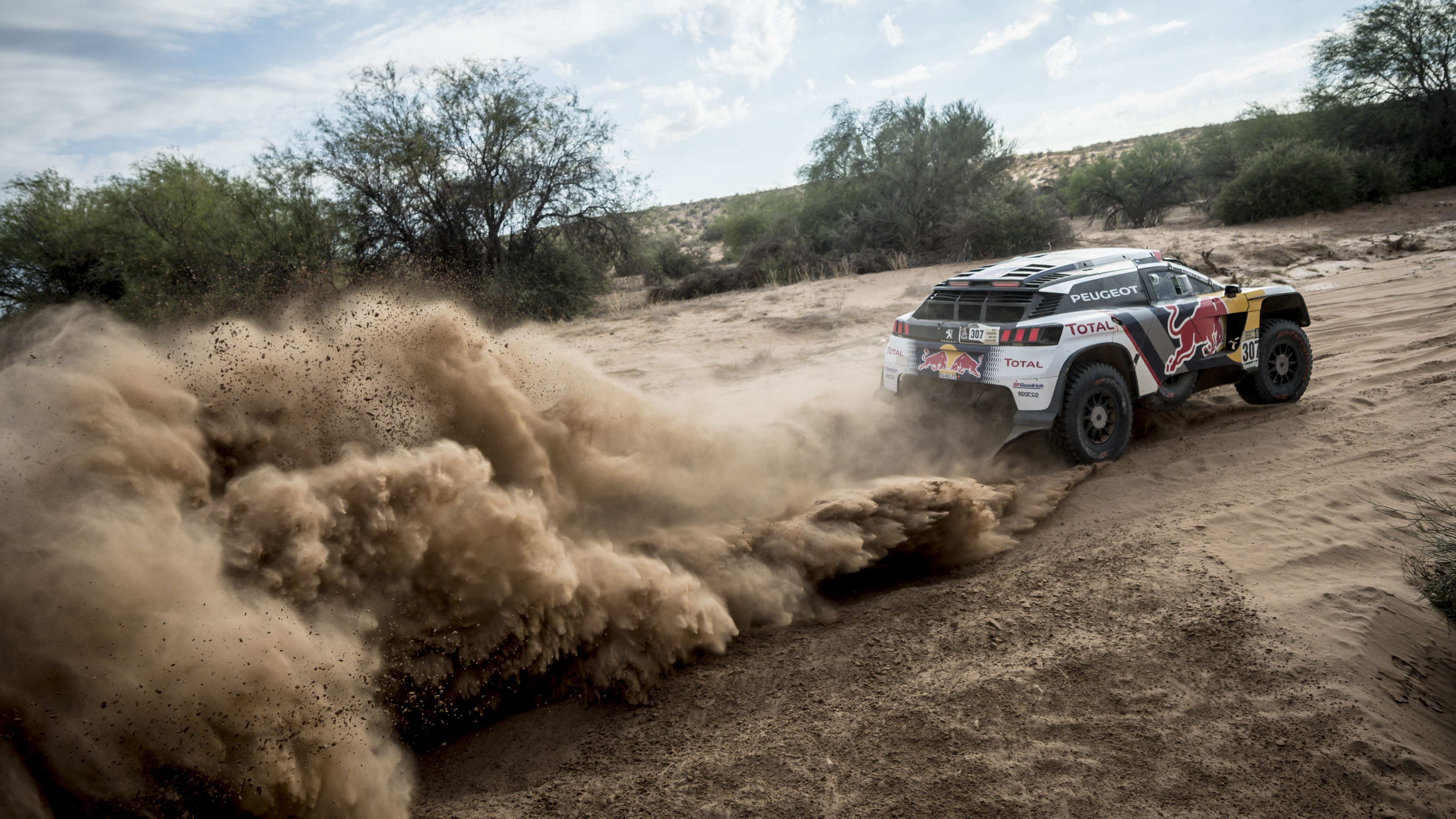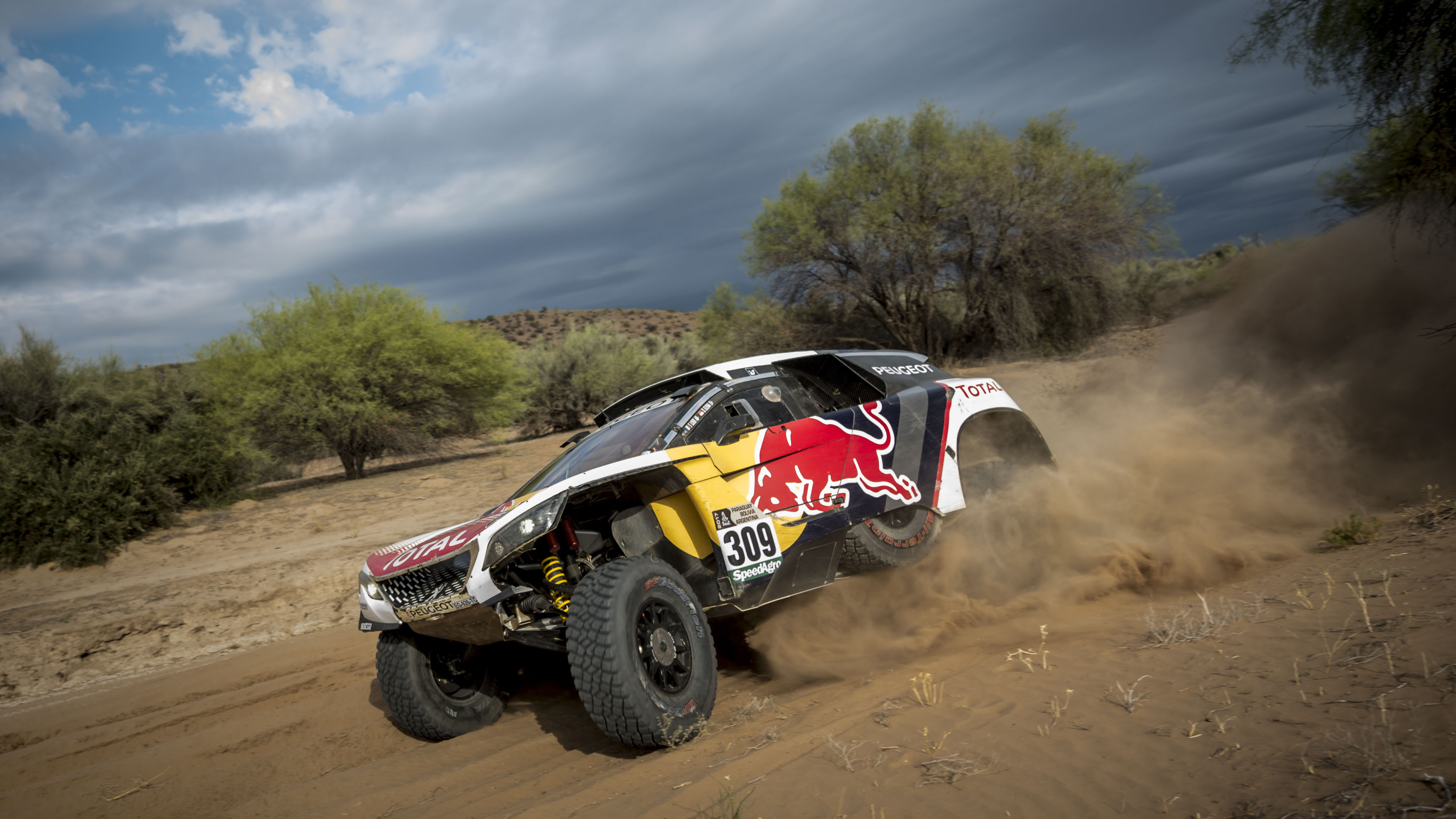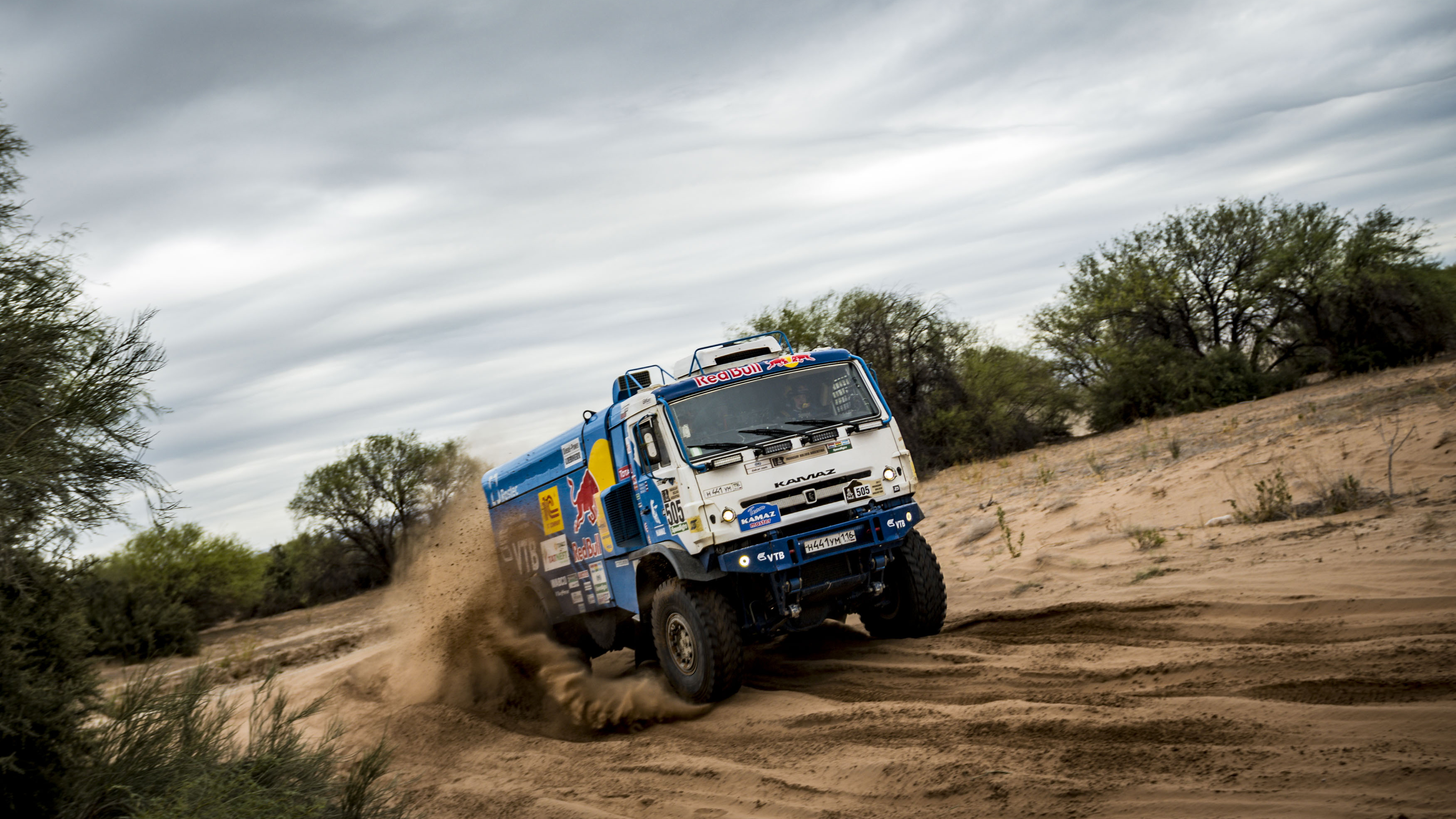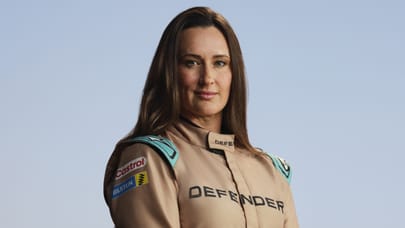
Here’s your Dakar 2017 wrap-up
Devastating weather, dominating Peugeots and, finally, a Brit on the podium
The Dakar Rally is pretty good at exhausting your supply of adjectives.
Brutal. Punishing. Exhausting. Back-breaking. Insane. All of these and more apply to the gruelling (another adjective!) Dakar rally raid.
Even at the best of times, Dakar is a race where broken cars are par for the course, broken bones are just as common, and even finishing the race can be beyond the capabilities of expert riders and drivers.
So, when we say that Dakar 2017 was difficult, even by Dakar’s standards, you might have some idea of what we’re on about.
This year’s race route took in more than 5,500 miles of South American terrain, including sand dunes, mountain passes, powder-dry scrublands and flooded plains.
In fact, flooding was a bit of a theme for Dakar 2017, with sections of the race cut short or cancelled entirely due to torrential rain, flooding and landslides. It was a particularly miserable time for competitors, spending hours on end trapped in the mud, with only a washed-out camp to return to at the end of their runs. That said, it was exceptionally bad for the Argentineans who call the town of Volcan (the worst-hit area) home, with a decent chunk of their town washed away or buried under mud.
As for the race itself, Dakar 2017 claimed the egos (and luckily not the lives) of some pretty big names. Carlos Sainz, Sr – no stranger to off-road driving – flipped spectacularly after running wide on a mountain road. Last year’s winner in the bike category, Australian Toby Price, broke his leg in four separate places and, funnily enough, had to undergo immediate surgery, rather than finish the race. And, if you still doubt the Dakar’s ferocity, a brand-new Toyota Hilux broke down. Yeah. It’s that tough.
However, a lucky, determined and exceptionally tough few, each behind the wheel of Peugeot’s wicked new desert racer, made it through the cornucopia of carnage – including breaking another competitor’s leg – to claim first, second and third places in the car class.
But it’s not an overall win. Not by a long shot. With a combined race time of 28 hours, 49 minutes and 30 seconds, the winning Peugeot 3008DKR of Dakar legend Stephane Peterhansel was slower than the first three trucks across the line, and almost a full hour behind the winning Kamaz truck, driven by Eduard Nikolaev. Sebastien Loeb, renowned for not being a slouch behind the wheel, was a further five and a half minutes off the pace, which, after nearly 29 hours of racing, is devilishly close. Finally, Cyril Despres rounded out the top three, just shy of 33 minutes off the lead car’s pace – and slower than an Iveco truck, which finished fourth. Dakar, it seems, is a race where size truly does matter. And trucks dominate Dakar in a way that cars, quads and bikes could only dream of.
And it’s back down in the two-wheeled arena where Britain claimed its first Dakar win. Yep, a local lad from Dorset, by the name of Sam Sunderland, has taken class honours. Chuffing marvellous, and all that.
Top Gear
Newsletter
Thank you for subscribing to our newsletter. Look out for your regular round-up of news, reviews and offers in your inbox.
Get all the latest news, reviews and exclusives, direct to your inbox.
Sunderland’s been in the fray for a while now, and has shown flashes of brilliance in the past, but hasn’t actually finished a Dakar until this year. You have to hand it to him – that’s finishing in style. Taking his KTM 450 to task for a total time of 32 hours, six minutes and 22 seconds, Sunderland beat teammate Matthias Walkner by more than half an hour overall to claim victory.
So how did Sunderland manage to do it? Well, as a teenager, he competed in UK motocross championships, before moving to Dubai, getting a job with KTM – also known as the winningest two-wheeled team in Dakar history – and started racing through the dunes. His success saw him sign with Honda for the 2012 Dakar before engine troubles forced his exit. Later on in 2012, he crashed in training, which put the dream of Dakar 2013 to bed. In 2014, his Honda went bang in the fourth stage, so Sunderland signed with KTM for 2015. At Dakar 2015, he won the first stage and crashed heavily in the fourth. Then, late in 2015, he crashed at another rally and couldn’t race at Dakar 2016.
“Not a very glorious record, I admit,” said Sunderland before this year’s race. Well, now it is. After finishing, Sunderland said, “It’s overwhelming. When I crossed the line, the emotion really took over. We did it, and I couldn’t be any happier.”
Edit: As an intrepid commenter pointed out, the trucks followed a different route for four of the 12 stages, which means the final timings between cars and trucks isn't as clear-cut as the numbers make it seem. For instance, on day two, the trucks' stage length was slightly longer than the cars, bikes and ATVs, but much shorter on day three. Overall, the route does favour the trucks, which does help to account for their shorter race times. Keep those comments coming!
Trending this week
- Car Review
BMW 1 Series




